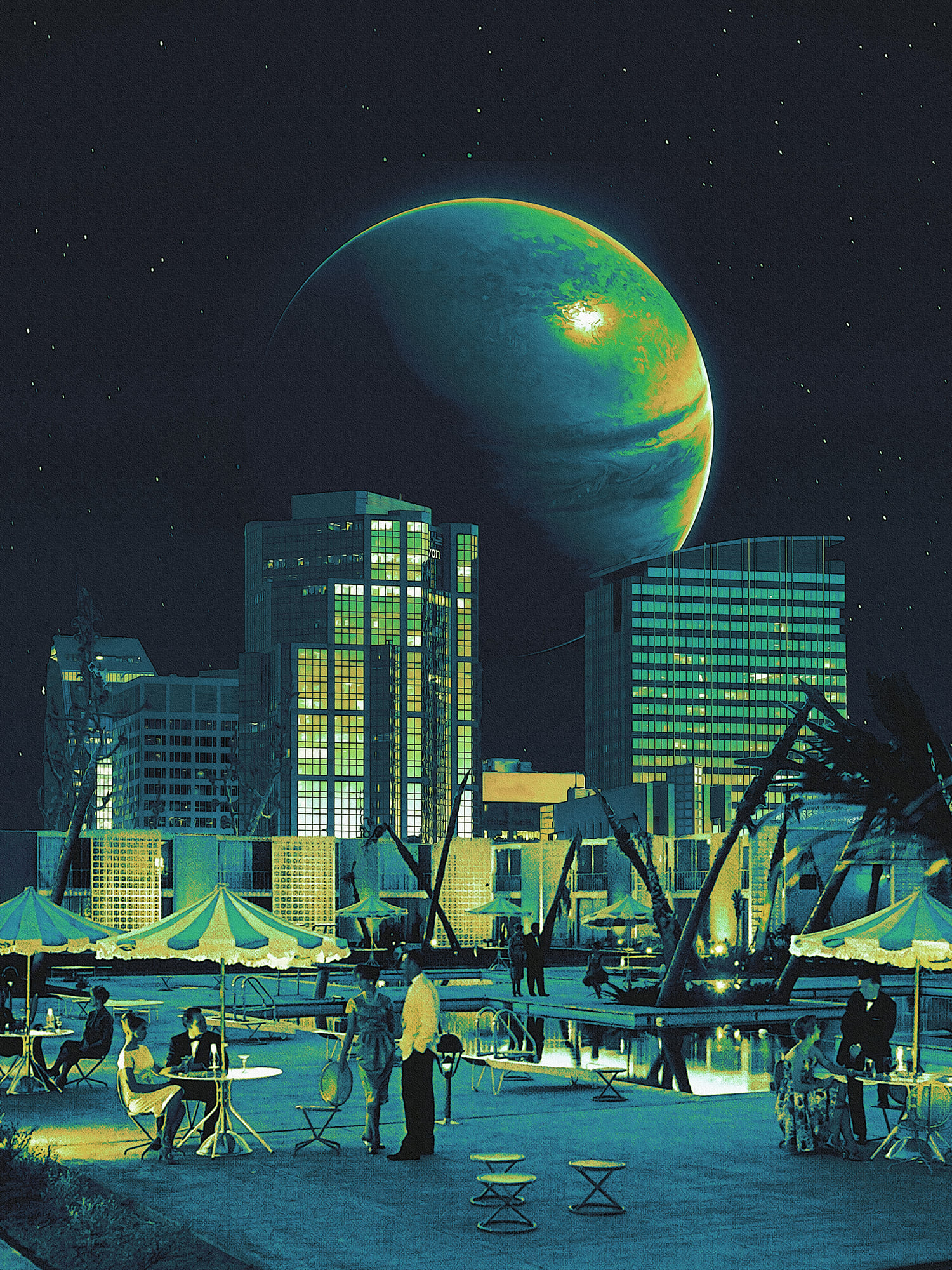I’ve always been fascinated by the unique blend of nostalgia and futuristic elements found in retro futurism art. It’s my favorite style of art, and I’m excited to share my perspective on what makes this genre so captivating.
Retro futurism art takes us on a visual journey through time, merging the past’s optimistic ideas about the future with today’s artistic sensibilities. It’s like stepping into a world where the dreams and aspirations of the Atomic Age and the Space Age meet modern design, creating an intriguing and evocative fusion that speaks to our collective imagination. Whether it’s through the use of vintage color palettes, bold typography, or futuristic themes, retro futurism offers a window into an alternate reality that’s both familiar and otherworldly.
As an artist, I love the creative challenge of blending these seemingly disparate elements, and it’s been an absolute thrill to explore the possibilities that arise when we look back to move forward.
In this article, I’ll be diving into the origins, characteristics, and enduring appeal of retro futurism art.
The Origins of Retro Futurism
The roots of retro futurism can be traced back to the mid-20th century, when the Atomic Age and Space Age captured the world’s imagination. People were fascinated by the rapid advancements in technology, and the prospect of space exploration had us all dreaming about the seemingly limitless potential of the future.
The Atomic Age and Space Age
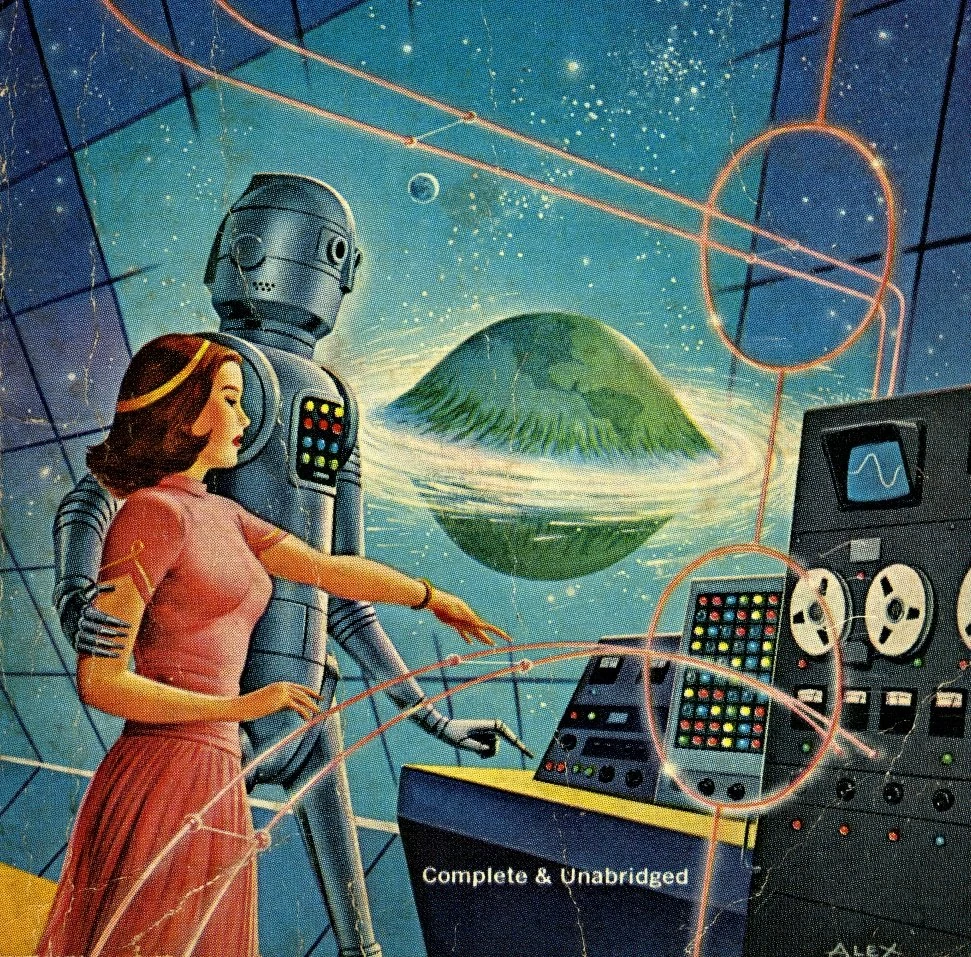
During the 1950s and 1960s, the world was buzzing with excitement over the possibilities that nuclear power and space travel presented. This era marked a time of unbridled optimism, with the belief that technology would propel humanity into an era of prosperity and progress. This sense of optimism and wonder permeated popular culture, with art, design, and architecture reflecting the futuristic vision of the time.
The prominence of 1950s and 1960s design
This futuristic outlook led to the creation of iconic designs that have come to define the retro futurism aesthetic. Designers of the time incorporated sleek lines, geometric shapes, and space-age materials into their work, aiming to create a utopian vision of the future. Think of the iconic Googie architecture, with its bold angles and exuberant forms, or the famous Eames lounge chair, which showcased innovative materials and techniques.
The role of science fiction literature and film
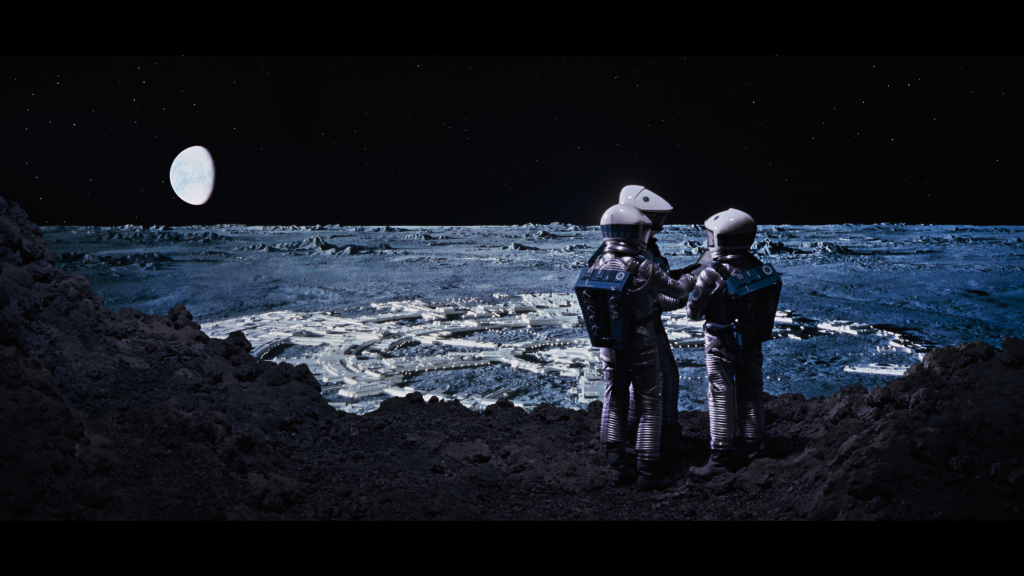
Another major influence on retro futurism was the science fiction of the mid-20th century. Writers like Isaac Asimov and Ray Bradbury envisioned worlds where advanced technologies and space travel were the norm, while films like “Forbidden Planet” and “2001: A Space Odyssey” brought these futuristic ideas to life on the silver screen. These stories not only fueled our fascination with the future, but also provided artists with a rich source of inspiration to draw from as they created their own retro futuristic works.
Characteristics of Retro Futurism Art
Retro futurism art is a vibrant and imaginative genre that combines elements from the past with forward-looking ideas. I’ve identified some key characteristics that set retro futurism apart:
Nostalgic elements
Vintage color palettes
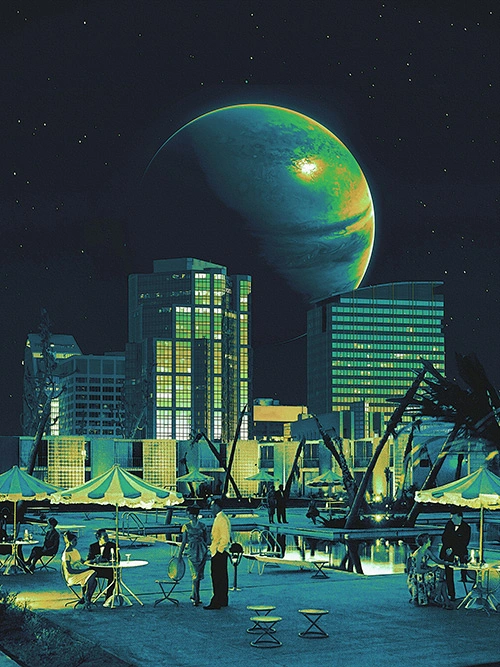
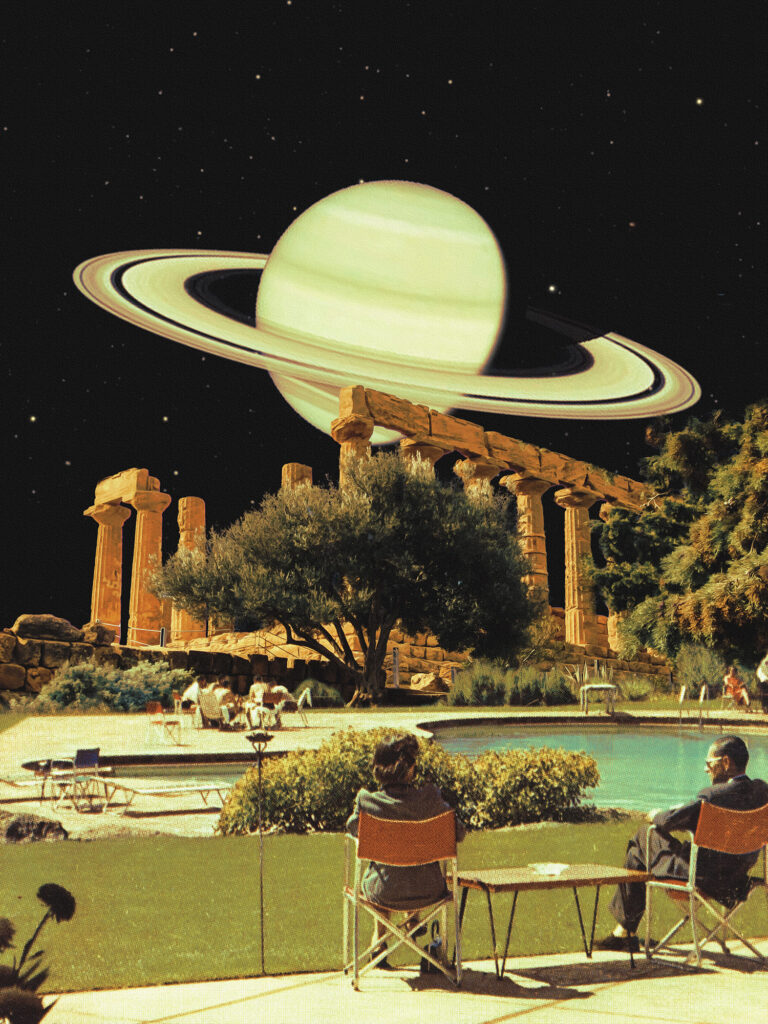
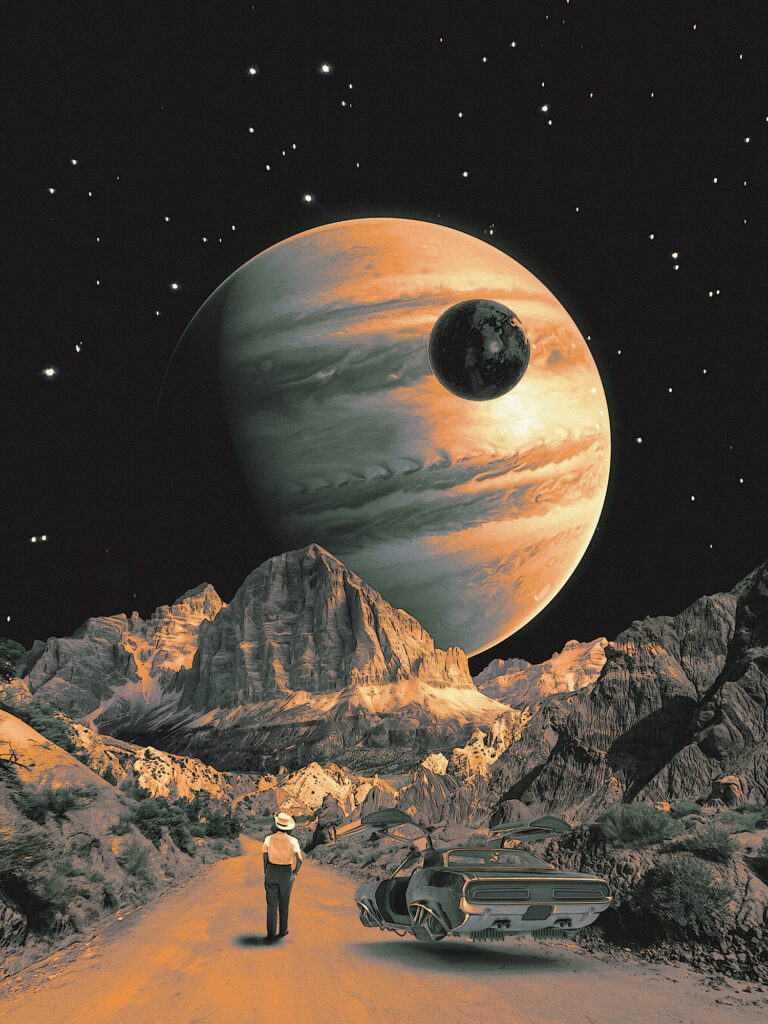
(Some examples of my work using vintage colors. See more of my work here.)
Retro futurism art often features color schemes that harken back to the 1950s and 1960s, with bold, contrasting hues such as teal, orange, mustard yellow, and pink. These colors evoke a sense of nostalgia while adding a touch of whimsy and charm to the artwork.
Typography and graphic design
The use of vintage typefaces, like those found in mid-century advertising and signage, is a distinctive aspect of retro futurism. These fonts, along with graphic design elements like geometric shapes and patterns, help create a visual connection to the past.
Futuristic themes
Space exploration

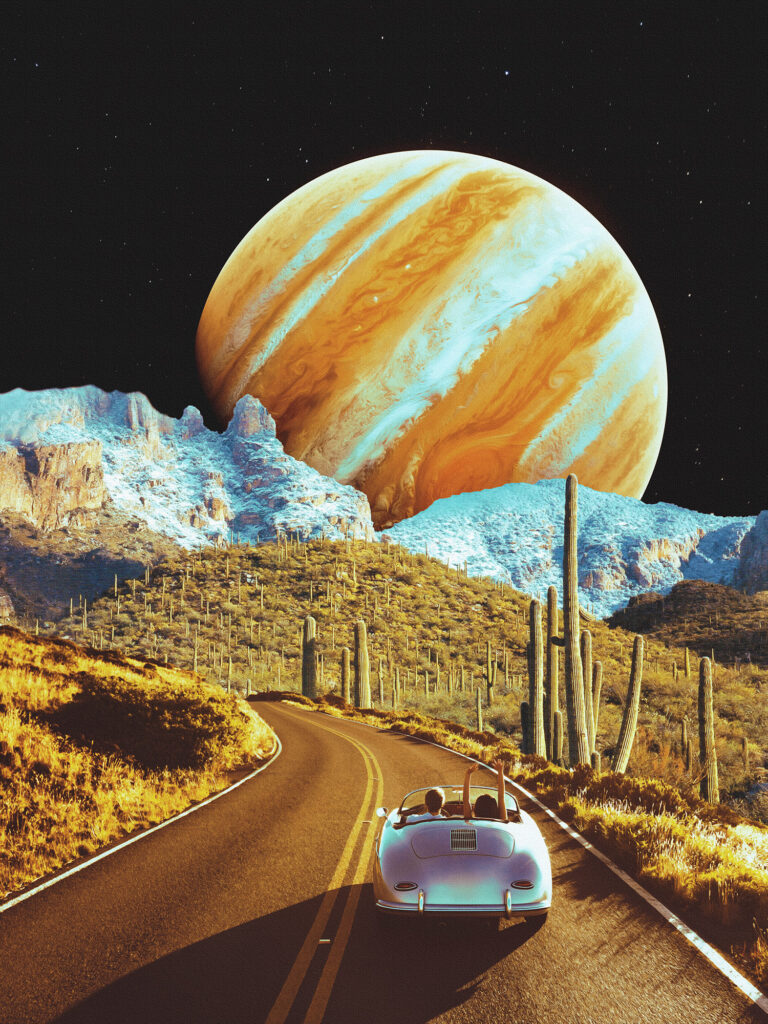
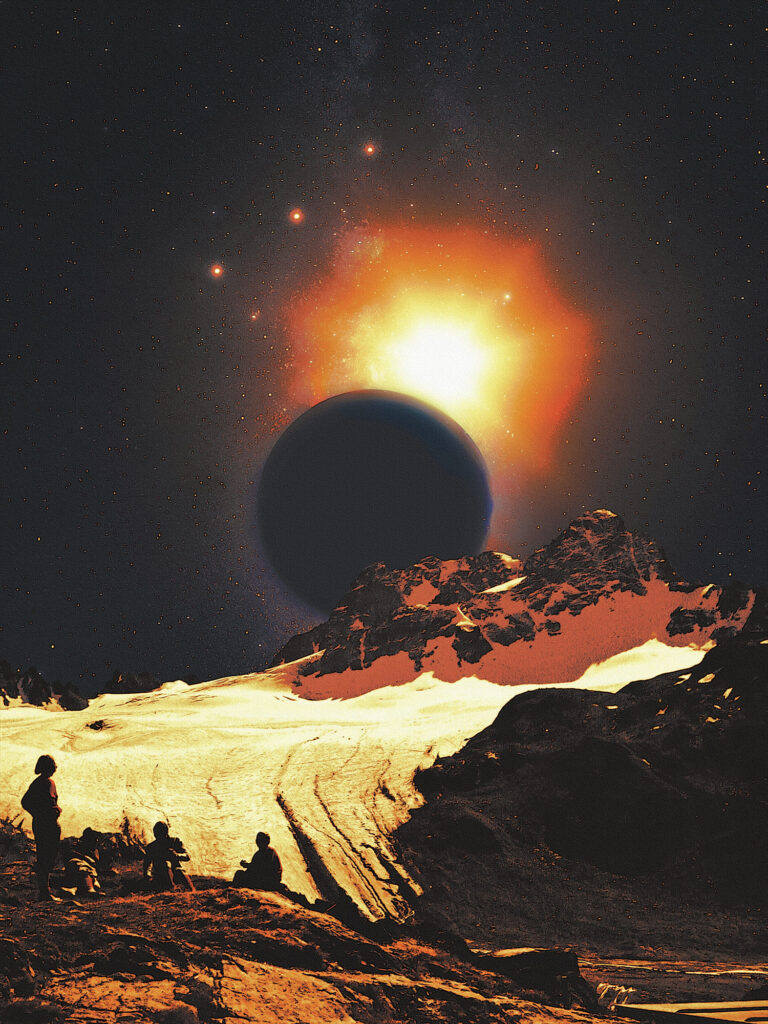
(Some examples of my work using vintage colors. See more of my work here.)
The excitement surrounding the Space Age is a recurring theme in retro futurism art. Images of rockets, flying saucers, and astronauts abound, reflecting humanity’s fascination with the cosmos and the potential for interstellar travel.
Advanced technologies
From robots to sleek transportation systems, retro futurism art often features depictions of futuristic technologies that were once considered cutting-edge or purely imaginative. These representations offer a unique perspective on how past generations envisioned the technological advancements of the future.
Utopian visions
Many retro futurism artworks present idealized, utopian visions of the future, with clean, efficient cities, innovative architecture, and harmonious societies. These images reflect the optimism and hope that characterized the Atomic Age and Space Age.
The fusion of past and future
Aesthetic contrasts
Retro futurism art often juxtaposes elements of the past with futuristic concepts, creating striking visual contrasts. For example, you might see a 1950s-style diner set on an alien planet or a vintage automobile equipped with a jet engine, like I’ve done in my work before, as you can see here:
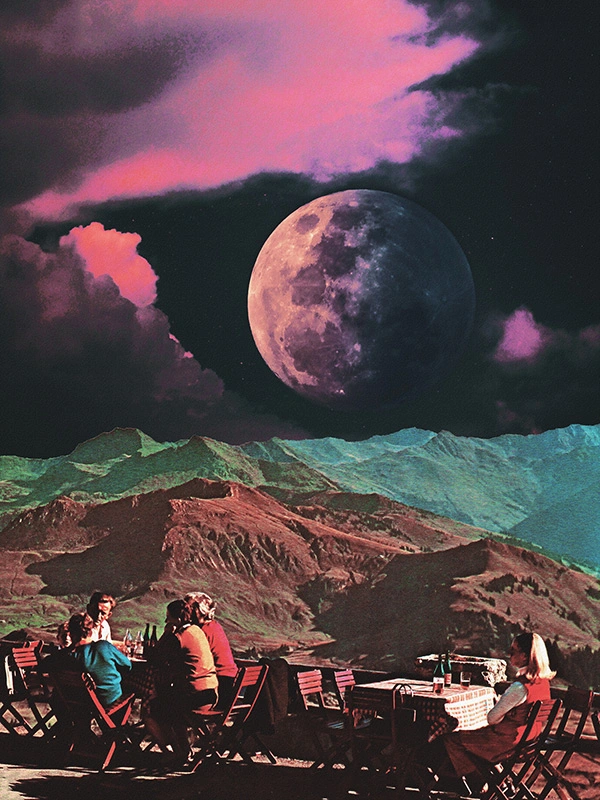
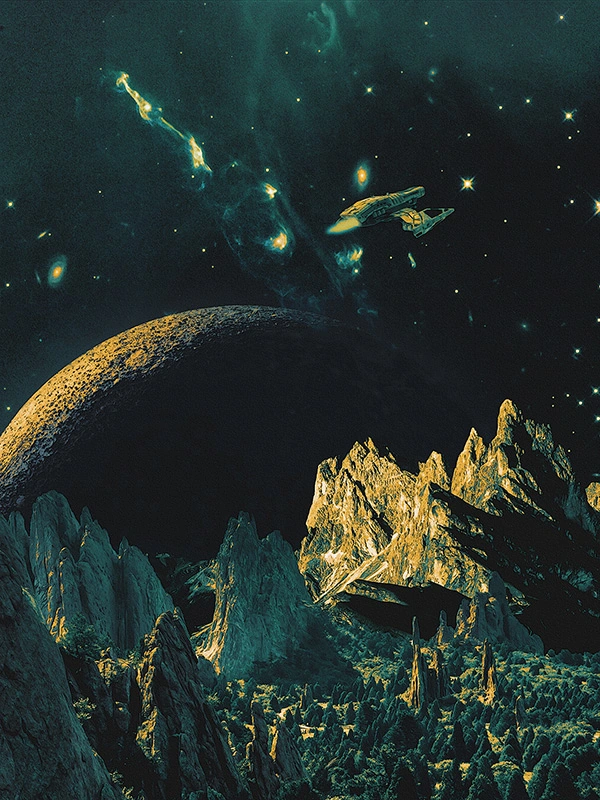
Reimagining historical eras
In some cases, retro futurism art reinterprets and reimagines past historical periods, placing them in a futuristic context. This can lead to fascinating reinterpretations, such as a steampunk-inspired Victorian cityscape or a neon-drenched noir scene set in the distant future.
These characteristics give retro futurism art its distinctive appeal, allowing artists like myself to create works that both pay homage to the past and push the boundaries of our imaginations.
Examples of Retro Futurism Art
Retro futurism art has made an impact in various forms, from the work of iconic artists to its influence on broader art movements and popular culture. Here are some examples that showcase the diverse range of retro futurism art:
Iconic retro futurism artists
Syd Mead

Often referred to as the “visual futurist,” Syd Mead was a prolific concept artist and industrial designer. His work, which includes designs for films like “Blade Runner” and “Tron,” epitomizes the retro futuristic aesthetic with its sleek lines, innovative technology, and futuristic cityscapes.
Frank R. Paul
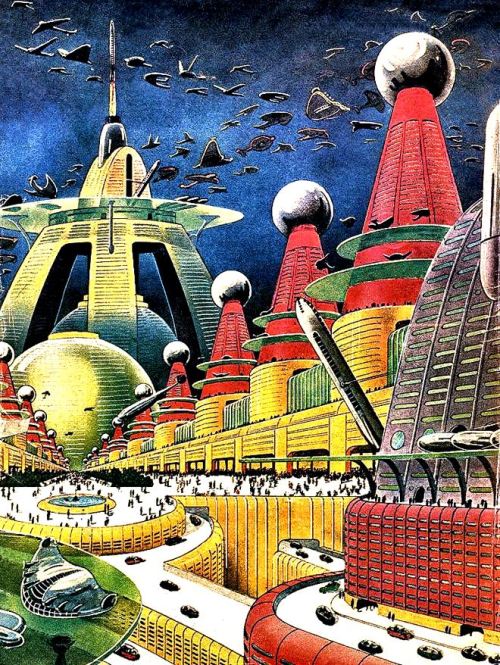
As an influential science fiction illustrator, Frank R. Paul’s work graced the covers of numerous pulp magazines during the early 20th century. His imaginative depictions of futuristic cities, advanced machinery, and alien landscapes helped to shape the visual language of retro futurism.
Art movements that influenced or were influenced by retro futurism
Art Deco
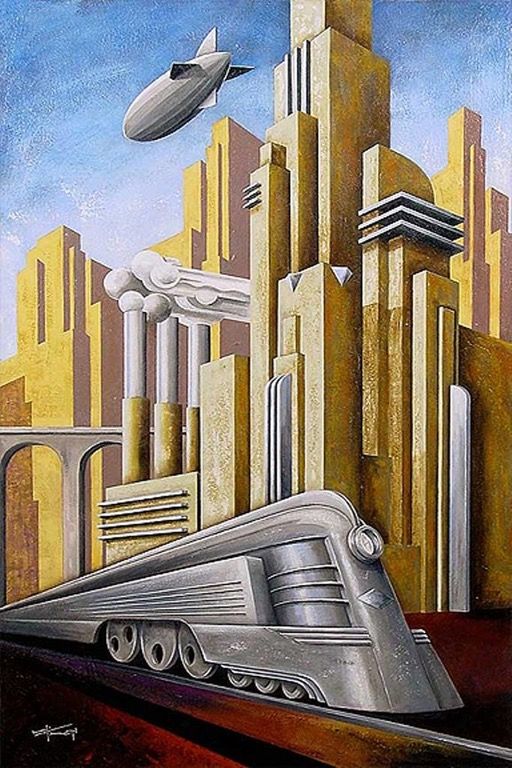
The Art Deco movement, which emerged in the 1920s and 1930s, shares several characteristics with retro futurism. The use of geometric shapes, streamlined forms, and bold colors can be seen in both genres, with Art Deco often serving as an inspiration for retro futuristic designs.
Pop Art
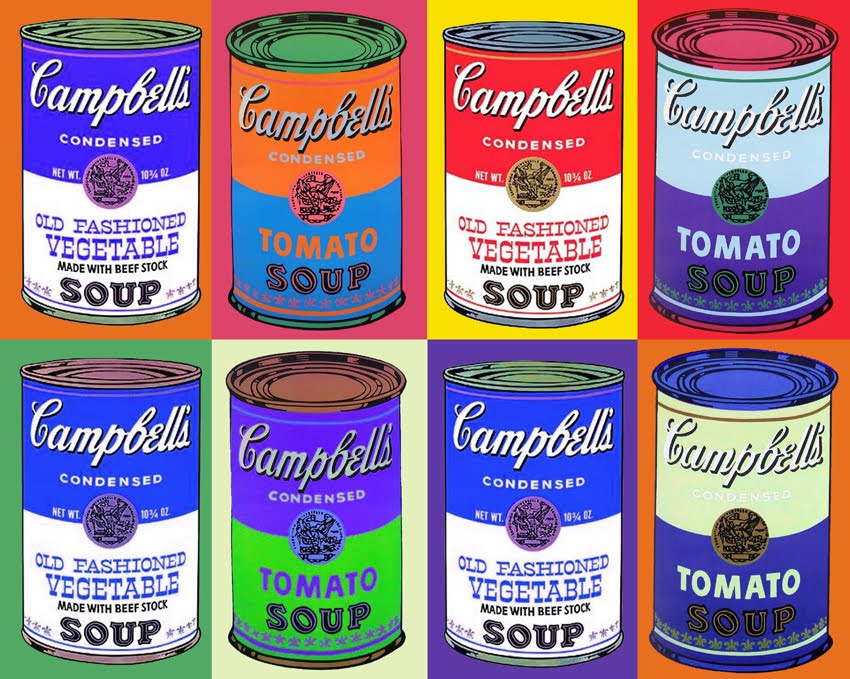
The Pop Art movement of the 1950s and 1960s, with its bold colors, mass-produced imagery, and exploration of popular culture, also shares a connection with retro futurism. Artists like Andy Warhol and Roy Lichtenstein often incorporated futuristic themes and imagery into their work, reflecting the zeitgeist of the time.
Retro futurism in pop culture
Films and television shows

The retro futuristic aesthetic has made its way onto the screen in films like “The Jetsons,” “Metropolis,” and “Sky Captain and the World of Tomorrow,” as well as TV series like “Doctor Who” and “Star Trek.” These productions showcase the timeless appeal of retro futurism art and its ability to transport viewers into a world of limitless possibilities.
Album covers and concert posters
The music industry has also embraced the retro futurism aesthetic, with album covers and concert posters often featuring futuristic themes, vintage design elements, and bold, eye-catching graphics. These visuals serve to enhance the overall experience of the music, adding a layer of artistic depth and intrigue.
These examples demonstrate the far-reaching influence of retro futurism art and its continued resonance in contemporary culture.
The Enduring Appeal of Retro Futurism Art
I often find myself pondering what it is about this genre that continues to captivate and inspire both artists and audiences alike. I believe there are several factors that contribute to the enduring appeal of retro futurism art:
The nostalgia factor
Retro futurism art taps into a sense of nostalgia for a bygone era, offering a visual connection to the past. The use of vintage color palettes, typography, and design elements evokes a sense of comfort and familiarity, transporting viewers back to a time when the future seemed bright and full of possibilities. This nostalgic quality can be deeply satisfying, allowing us to momentarily escape the complexities of the present.
The excitement of an imagined future
While retro futurism art may be rooted in the past, it also invites us to envision an alternate future, one filled with advanced technology, space exploration, and utopian societies. These imagined futures can be both exhilarating and thought-provoking, as they encourage us to consider what our world might look like if certain events or advancements had unfolded differently. This sense of wonder and curiosity is a key aspect of the genre’s appeal, as it challenges us to dream big and think creatively about the future.
The exploration of alternative timelines
Retro futurism art often presents a unique blend of historical and futuristic elements, creating alternate timelines and “what-if” scenarios that can be both intriguing and thought-provoking. By reimagining the past and speculating on the future, these artworks offer a fresh perspective on familiar events and ideas, inviting us to question our assumptions and consider the potential impact of different choices or technological advancements.
The enduring appeal of retro futurism art lies in its ability to simultaneously transport us back in time and propel us into an imagined future. It’s a style that resonates with our innate sense of curiosity and wonder, inviting us to explore the endless possibilities that lie at the intersection of past and future. As an artist working within this genre, I find it incredibly rewarding to create works that evoke these emotions and spark the imagination, and I look forward to continuing my journey through the captivating world of retro futurism art.
In conclusion, retro futurism art is a captivating genre that allows us to explore the fascinating interplay between nostalgia and futuristic imagination. By combining elements of the past with visions of the future, this style offers a unique perspective on the ever-evolving human experience and our collective dreams and aspirations.
Whether you’re an artist, art enthusiast, or simply someone with a passion for the past and an eye on the future, I hope this article has provided you with a deeper appreciation for the world of retro futurism art. Let’s continue to explore the boundless possibilities of this genre, as we take inspiration from the past to imagine and create a more vibrant, imaginative, and inspiring future.
